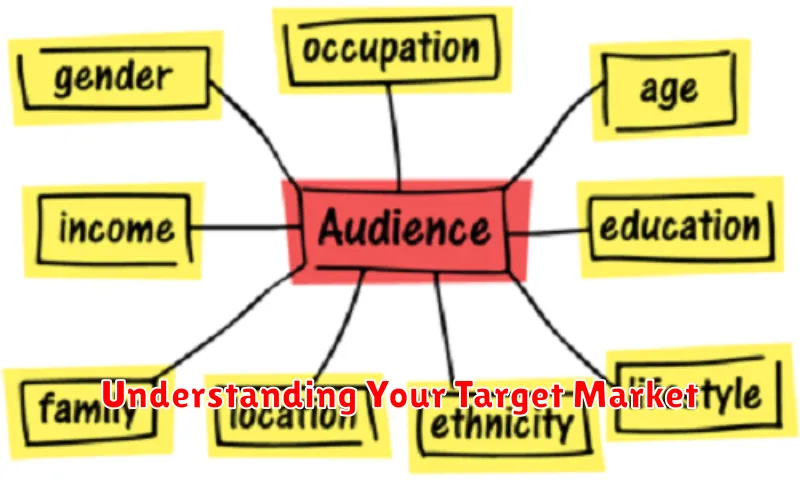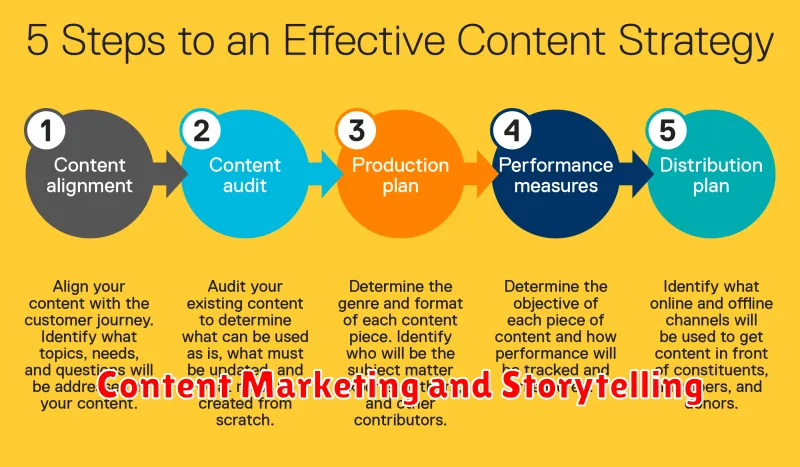Launching a new business requires a robust marketing strategy to ensure success. This article explores effective marketing strategies specifically designed for new business owners, covering essential elements like defining your target audience, building a strong brand identity, leveraging social media marketing, implementing search engine optimization (SEO), and utilizing cost-effective digital marketing techniques. Learn how to maximize your marketing budget and attract your ideal customers to achieve sustainable business growth.
Understanding Your Target Market

Understanding your target market is crucial for effective marketing. It’s not enough to simply sell a product or service; you need to know who you’re selling it to.
Defining your target market involves identifying key demographics such as age, gender, location, income, and education. Beyond demographics, consider their psychographics – their values, interests, lifestyle, and attitudes. What are their needs and pain points? What motivates their purchasing decisions?
Creating detailed buyer personas can be incredibly helpful. These are semi-fictional representations of your ideal customers, based on your market research. By developing these personas, you can personalize your marketing messages and tailor your strategies for maximum impact.
Market research is essential. This can include surveys, focus groups, competitor analysis, and analyzing existing data. The more you understand your target market, the more effectively you can reach them with your marketing efforts.
Remember, a well-defined target market allows for focused marketing, leading to increased efficiency and a higher return on investment (ROI).
Creating a Unique Value Proposition
A unique value proposition (UVP) is crucial for new businesses. It’s a concise statement that explains what makes your company different and better than the competition. It highlights the specific benefits your customers will receive, addressing their needs and pain points.
To craft a compelling UVP, start by identifying your target audience and their needs. Then, pinpoint what sets your offering apart – is it superior quality, exceptional service, innovative features, or competitive pricing? Consider what problem you solve better than anyone else.
Your UVP should be memorable and easy to understand. It needs to resonate with your target audience, clearly communicating the value you offer. It should be incorporated into all your marketing materials, from your website to your social media presence.
Testing your UVP is essential. Gather feedback from potential customers to ensure it resonates and accurately reflects the value you deliver. Adjust your messaging as needed based on this valuable input.
A strong UVP is more than just a marketing slogan; it’s the foundation of your brand’s identity and a key driver for attracting and retaining customers in a competitive market. By clearly articulating your unique value, you significantly improve your chances of success.
Digital Marketing Channels to Prioritize
Starting a new business requires a strategic approach to marketing. While numerous channels exist, prioritizing a few key options is crucial for maximizing your impact and budget. Social media marketing, particularly platforms relevant to your target audience (e.g., Instagram for visuals, LinkedIn for professionals), offers cost-effective reach and engagement opportunities. Building a strong social media presence is essential for brand building and customer interaction.
Search engine optimization (SEO) is another vital channel. Investing in SEO ensures your website ranks higher in search engine results, driving organic traffic to your business. Focus on keyword research and on-page optimization to improve your visibility.
Email marketing remains a powerful tool. Building an email list allows for direct communication with potential and existing customers. Targeted email campaigns can promote new products, offer special deals, and nurture customer relationships, ultimately boosting sales and loyalty.
Paid advertising, such as Google Ads or social media ads, can provide targeted reach to a wider audience. However, it’s essential to carefully plan your campaigns and track your return on investment (ROI) to ensure effectiveness.
Finally, consider the power of content marketing. Creating valuable and engaging content (blog posts, articles, videos) establishes your expertise, attracts your target audience, and builds trust. Remember to distribute this content through your chosen channels to maximize exposure.
Building a Website and Social Presence
Establishing a strong online presence is crucial for new businesses. A professional website serves as your digital storefront, showcasing products or services and providing essential information. It should be user-friendly, mobile-responsive, and optimized for search engines (SEO).
Simultaneously, building a presence on relevant social media platforms is vital. Choose platforms where your target audience is most active. Focus on creating engaging content, interacting with followers, and running targeted advertising campaigns to increase brand awareness and drive traffic to your website. Consistency is key to building a loyal online community.
Integrating your website and social media strategies is essential. Include social media sharing buttons on your website and link your website to your social media profiles. Maintain a consistent brand voice and visual identity across all platforms for a cohesive brand experience.
Consider using analytics tools to track website traffic and social media engagement. This data will help you understand what’s working and what needs improvement, allowing you to refine your strategy over time for optimal results.
Content Marketing and Storytelling

Content marketing and storytelling are powerful tools for new business owners. By creating valuable, engaging content that resonates with your target audience, you build brand awareness and trust. This content can take many forms, including blog posts, social media updates, videos, and infographics.
Storytelling is crucial. Sharing your brand’s story—your mission, values, and the journey you’ve taken—creates a personal connection with potential customers. Highlighting customer success stories further boosts credibility and inspires confidence.
Effective content marketing requires a strategic approach. Identify your ideal customer, understand their needs and pain points, and create content that directly addresses them. Consistency is key; regularly publishing high-quality content keeps your audience engaged and fosters loyalty.
Remember to optimize your content for search engines (SEO) to improve visibility. Use relevant keywords and ensure your content is easily shareable across different platforms. Analyzing your results and adapting your strategy based on performance data is also vital for ongoing success.
How to Use Referrals and Word-of-Mouth
Word-of-mouth and referrals are powerful, cost-effective marketing tools for new businesses. They leverage the trust existing customers have in your brand to attract new ones.
To effectively utilize referrals, implement a formal referral program. This could involve offering incentives, such as discounts or free products/services, to both the referrer and the new customer. Make the process simple; provide clear instructions and easy-to-use referral forms or links.
Encourage word-of-mouth marketing by consistently delivering exceptional customer service. Happy customers are more likely to recommend your business to others. Actively solicit feedback and address concerns promptly. Consider adding a simple request for reviews on platforms like Google or Yelp in your post-purchase communication.
Track your referral program’s success by monitoring the number of referrals generated, the conversion rate, and the overall revenue attributed to referrals. This data will help you refine your strategy and maximize its impact.
Finally, don’t underestimate the power of building relationships with your customers. Strong relationships foster loyalty and increase the likelihood of positive word-of-mouth marketing.
Marketing with a Limited Budget
Starting a new business often means operating with a limited marketing budget. Fortunately, effective marketing doesn’t always require significant financial investment. Focus on strategies that maximize your return on investment (ROI).
Leverage free marketing channels. Social media platforms like Facebook, Instagram, and Twitter offer organic reach opportunities. Create engaging content, interact with your audience, and utilize relevant hashtags to increase visibility. Consider building a strong email list to nurture leads and announce promotions.
Content marketing is crucial. Develop valuable, informative content—blog posts, articles, videos—that attracts your target audience and positions you as an expert in your field. This helps establish your brand’s credibility and authority without significant ad spending.
Optimize for local SEO. If your business serves a specific geographical area, ensure your Google My Business profile is complete and accurate. Encourage customer reviews to boost your online reputation. Partnering with local businesses or community groups can also provide cost-effective promotional opportunities.
Track your results. Monitor the performance of your marketing activities to understand what’s working and what’s not. This data-driven approach allows you to refine your strategy and allocate your limited resources effectively. Consistent monitoring and adaptation are essential for maximizing impact on a budget.
Measuring Results and Improving Your Strategy
Measuring the effectiveness of your marketing efforts is crucial for a new business. Don’t just rely on gut feeling; use key performance indicators (KPIs).
Track website traffic, social media engagement, lead generation, conversion rates, and return on investment (ROI). Tools like Google Analytics can provide valuable data.
Analyze your data regularly. Identify what’s working and what’s not. This allows you to optimize your strategy.
A/B testing different marketing materials (e.g., ad copy, landing pages) helps determine which approaches resonate most with your target audience.
Based on your findings, adapt and refine your marketing strategy. Continuously experiment with new tactics and channels to enhance your results.
Regular review and adjustment are essential for maximizing your marketing ROI and achieving sustainable growth. Remember that effective marketing is an iterative process.

